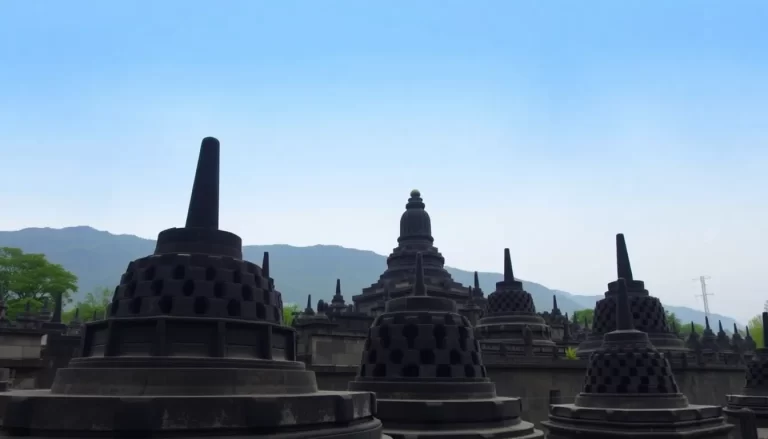Located just outside the bustling city of Prague, the Sedlec Ossuary, commonly known as the Bone Church, is a hauntingly beautiful site that attracts visitors from all over the world. With its unique display of human bones, this chapel offers a glimpse into the historical and cultural intricacies of the region, making it an essential stop for travelers interested in the darker aspects of history and art.
But what makes this church so special? Beyond its macabre aesthetic, the Sedlec Ossuary is steeped in rich history that dates back centuries. From its origins to modern-day tourism, there are myriad reasons to explore this unusual landmark. Let’s delve deeper into its significance, how to visit, and what to expect on your journey.
The Historical Significance of Sedlec Ossuary
Officially recognized as the Sedlec Ossuary, this Roman Catholic chapel is part of a larger Cistercian monastery founded in 1142. It is located in Kutná Hora, a UNESCO World Heritage site that was once a thriving silver mining town. The chapel’s moniker, “the Bone Church,” stems from its astonishing collection of over 40,000 human bones.
The origins of the ossuary can be traced back to 1278, when the abbot of the monastery, Henry, returned from a pilgrimage to Jerusalem. He brought back soil from the Holy Land and sprinkled it over the cemetery, transforming it into a site of pilgrimage and reverence. The cemetery soon became a popular burial ground, especially during the Black Death in the 14th century, which claimed approximately 30,000 lives.
As the cemetery filled, the need for space led to a unique solution. In 1511, a blind monk began stacking the bones of the deceased in the church, setting the stage for the artistic arrangements seen today. In the late 19th century, artist František Rint was commissioned to create the iconic bone decorations, including a massive chandelier made entirely of bones.
Visiting Sedlec Ossuary: What You Need to Know
For those planning a visit, the Sedlec Ossuary is conveniently located about an hour from Prague. The chapel is open every day except December 24th, and admission is reasonably priced, making it accessible to many. Here’s what you should keep in mind:
- Location: The ossuary can be found at Zámecká 279, Kutná Hora.
- Opening Hours: Open daily throughout the year, except on Christmas Eve.
- Admission Fees: 90 CZK for adults and reduced rates for students and seniors.
- Guided Tours: Consider joining a guided tour for in-depth historical context and stories behind the ossuary.
Traveling to Kutná Hora from Prague
Reaching Kutná Hora from Prague is straightforward, thanks to regular train services. The trains depart from Prague’s main train station approximately every hour, providing a scenic and comfortable ride through the Czech countryside. Here’s a breakdown of the journey:
- Duration: Approximately 1 hour.
- Cost: Around 119 CZK each way.
- Tickets: No need to book in advance; tickets can be purchased on the day of travel.
Travelers can also opt for bus tours that often include additional stops at other notable sites in the region, enriching the experience further.
Exploring Kutná Hora: Beyond the Ossuary
Kutná Hora itself is a captivating town filled with historical charm and fewer crowds compared to Prague. The town boasts stunning architecture, including the Gothic St. Barbara’s Church and the Italian Court, which showcases the town’s illustrious past as a silver mining hub. Here are some highlights to consider visiting while in Kutná Hora:
- St. Barbara’s Church: A UNESCO World Heritage site known for its stunning frescoes and intricate architecture.
- Italian Court: Once the royal mint, this historic building reflects the wealth of the town during its silver mining boom.
- Kutná Hora Museum: Offers insights into the town’s history, culture, and mining heritage.
Exploring these sites gives visitors a fuller understanding of Kutná Hora’s significance beyond the ossuary, allowing for a rewarding day trip experience.
Photography and Visitor Guidelines at Sedlec Ossuary
Visitors often wonder about photography within the ossuary. While capturing the haunting beauty of the chapel is tempting, photography is subject to certain restrictions. Here’s what you need to know:
- Photography Rules: Generally, photography is allowed; however, it’s best to be respectful of other visitors and the sacred atmosphere.
- Flash Photography: Avoid using flash to maintain the serene ambiance and protect the artifacts.
- Guided Tours: Consider a guided tour to learn more about the significance behind various displays while respecting the solemn nature of the site.
Is Sedlec Ossuary Worth the Visit?
With its unique atmosphere and rich history, the Sedlec Ossuary is undoubtedly a must-see for those traveling to the Czech Republic. Visitors often describe the experience as both eerie and awe-inspiring. It offers a chance to reflect on mortality, art, and history in a way that few other places can.
However, it’s essential to approach the visit with the right mindset. The ossuary serves as a reminder of the fragility of life and the historical events that led to its creation. For those intrigued by the macabre or fascinated by history, Sedlec Ossuary will be a memorable highlight of any trip to the region.
Additional Tips for Your Visit
To ensure a smooth visit to Sedlec Ossuary and Kutná Hora, consider the following tips:
- Dress Appropriately: Wear comfortable shoes and dress in layers, as the chapel can be cool inside.
- Stay Hydrated: Bring a bottle of water, especially if you’re planning to explore the town afterward.
- Plan Your Trip: Aim to visit early in the day to avoid crowds and have a more intimate experience.
Your visit to the Sedlec Ossuary and Kutná Hora promises to be a journey through time, art, and history, making it a worthwhile addition to your travel itinerary in the Czech Republic.







